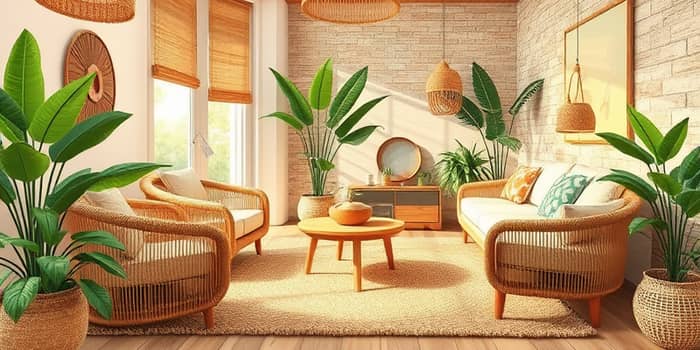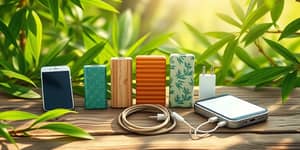Coconut fiber, commonly known as coir, is transforming the way we think about eco-friendly interiors. From discarded husks to premium home accents, coir’s evolution is a testament to sustainable ingenuity.
What is Coconut Fiber and How Is It Processed?
Coir originates from the fibrous outer husk of coconuts, a by-product of the coconut industry that once ended up in landfills. Through a combination of natural retting—soaking husks in water to loosen fibers—and mechanical decortication, these resilient strands are separated and cleaned.
After extraction, coir fibers undergo brushing and combing to remove impurities before being dried under the sun. This method preserves moisture retention properties, making coir ideal for heat and saline resistance while maintaining structural integrity.
Once processed, these fibers can be spun into yarn, woven into mats, or molded with binders for diverse applications. Its inherent good thermal and acoustic insulation properties have piqued the interest of designers worldwide.
Traditional and Modern Home Décor Uses
From classic doormats to avant-garde furniture pieces, coconut fiber infuses spaces with organic warmth and refined texture.
- Doormats and Rugs: With its coarse weave, coir traps debris and moisture, making entryways cleaner. Sizes range from 50 x 40 cm door mats to larger hallway runners.
- Furniture: Artisans combine coir with natural latex or reclaimed wood to form chairs, stools, and ottomans. Examples include 40 cm diameter round seats and 33 x 33 x 45 cm square stools, honoring both form and function.
- Wall Cladding and Tiles: Innovations like Kirei Coco Tiles showcase smooth, textured wall finishes that merge eco-conscious design with modern aesthetics. Each tile repurposes coconut shells for a mosaic effect.
- Decorative Accessories: From 40 x 30 cm food covers to handcrafted storage boxes in multiple sizes, coir adds a natural aesthetic and functionality to any room.
- DIY Crafts: Enthusiasts craft hanging planters, braided ropes, scrub brushes, and woven baskets, celebrating coir’s versatility and artistic potential.
Sustainability Impact
Incorporating coconut fiber into decor offers a powerful alternative to synthetic materials. By diverting husks from waste streams, coir production reducing agricultural waste and landfills while creating economic opportunities for rural communities.
Unlike plastic, coir is eco-friendly and highly sustainable, requiring no toxic chemicals during processing. Its biodegradability means products can return to soil without leaving harmful residues, nurturing a circular lifecycle.
Market Growth & Trends
Global demand for coir-based home decor has surged in the past decade. The US and European markets report double-digit growth as consumers seek products labeled “natural,” “biodegradable,” and “upcycled.”
Influencers on platforms like Pinterest and Instagram are driving new styles, from minimalist storage cubbies to bold statement chairs. Brands such as GoodHout highlight coir’s potential by showcasing handcrafted lines and ethical sourcing.
- Consumers prioritize 100% naturally originated, strong materials over petrochemical-based alternatives.
- DIY tutorials online inspire homeowners to customize coir accents, reinforcing a culture of resourceful creativity.
Future Directions and Innovations
Research into coir-based composite boards aims to challenge plastics and hardwoods in mass-market furniture. These panels, made by compressing husk fibers under heat, offer a promising path toward circular manufacturing.
Current studies focus on enhancing coir’s mechanical properties and surface finishes, exploring bio-resin coatings for water resistance and color stability. Collaboration between designers, engineers, and farmers is cultivating breakthroughs in both scale and aesthetics.
As technology advances, we may see 3D-printed coir composites, flexible textile applications, and monolithic decor pieces that marry tradition with futuristic design principles.
Conclusion
The rise of coconut fiber in home decor underscores a vibrant shift toward sustainable living. With its abundant availability, robust performance, and minimal environmental footprint, coir is poised to transform interiors and inspire a greener future.
As we embrace the elegance of coir, every rug laid and wall clad becomes a testament to thoughtful design and planetary stewardship.
References
- https://www.instructables.com/31-Unusual-Uses-For-Coconuts/
- https://www.pinterest.com/ideas/coconut-fiber/932571344253/
- https://www.pinterest.com/ideas/coconut-fiber-products/903507189611/
- https://purgula.com/design/coconut-coir-for-furniture-and-home-decor/
- https://www.youtube.com/watch?v=foeionTuJo4
- https://balisunshadesails.com/coconut-home-living/
- https://pubs.rsc.org/en/content/articlehtml/2021/ra/d1ra00231g
- https://www.houzz.com/discussions/1994737/using-coconut-fiber










